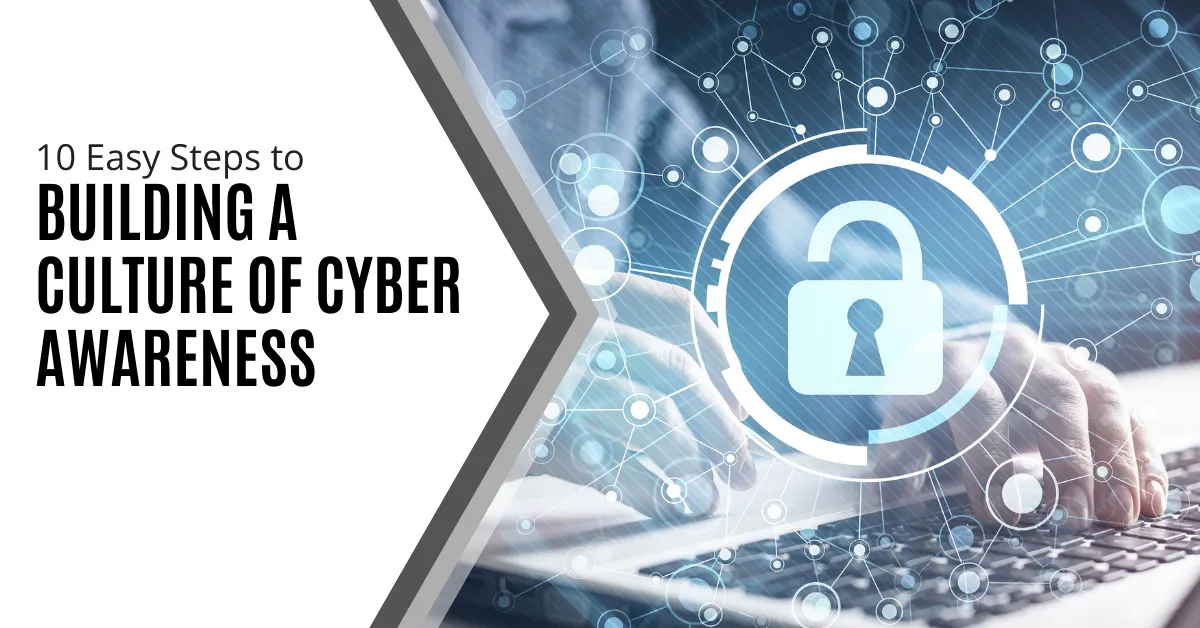
10 Easy Steps to Building a Culture of Cyber Awareness
Cyberattacks are relentless. Phishing emails, malware downloads, data breaches—they can cripple businesses and devastate lives. The root cause? Often, it's human error. Employees click phishing links or create weak passwords, making them easy prey for hackers. 95% of data breaches are due to human error (IBM Security Report). But these mistakes are preventable. A strong culture of cyber awareness can dramatically reduce your risk.
Why Culture Matters
Think of your cybersecurity as a chain. Strong links make it unbreakable, while weak links make it vulnerable. Your employees are the links. By fostering a culture of cyber awareness, you turn each employee into a strong link, fortifying your entire organization.
Easy Steps, Big Impact
Creating a cyber-aware culture doesn't require complex strategies or expensive programs. Here’s how to make a big difference with simple steps.
1. Start with Leadership Buy-in
Security isn't just an IT issue. When executives champion cyber awareness, it sends a powerful message. Leadership should participate in training sessions, speak at security events, and allocate resources for ongoing initiatives.
2. Make Security Awareness Fun, Not Fearful
Cybersecurity training doesn't have to be boring. Use engaging videos, gamified quizzes, and real-life scenarios to keep employees interested. Interactive modules and short, animated videos can make complex concepts clear and relatable.
3. Speak Their Language
Avoid technical jargon. Communicate in plain language with practical advice employees can use daily. Instead of "implement multi-factor authentication," say it adds an extra layer of security, like needing a code from your phone along with your password.
4. Keep it Short and Sweet
Opt for bite-sized training modules. Use microlearning approaches delivered in short bursts. This keeps employees engaged and reinforces key security concepts without overwhelming them.
5. Conduct Phishing Drills
Regular phishing drills test awareness and preparedness. Send simulated phishing emails and track responses. Use the results to educate employees on red flags and reporting suspicious messages (KnowBe4). After drills, dissect the emails with employees to highlight the signs of a phishing attempt.
6. Make Reporting Easy and Encouraged
Employees need to feel comfortable reporting suspicious activity without fear of blame. Create a safe reporting system with a dedicated email address, an anonymous hotline, or a designated security champion employees can approach directly.
7. Security Champions: Empower Your Employees
Identify enthusiastic employees to become "security champions." They can answer questions, promote best practices, and foster a sense of shared responsibility for cybersecurity within the organization (SANS Security Awareness).
8. Beyond Work: Security Spills Over
Educate employees on protecting themselves at home. Share tips on strong passwords, secure Wi-Fi, and avoiding public hotspots (FTC Cybersecurity for Small Business). Employees who practice good security habits at home are more likely to do so at work.
9. Celebrate Success
Recognize and celebrate achievements in cyber awareness. Did someone report a suspicious email? Did a team achieve a low click-through rate on a phishing drill? Publicly acknowledge their contributions to keep motivation high.
10. Bonus Tip: Leverage Technology
Use online training platforms that deliver microlearning modules and track progress. Schedule automated phishing simulations. Bolster security with tools like password managers, email filtering, automated rules, and DNS filtering (Microsoft Sensitivity Labels).
The Bottom Line: Everyone Plays a Role
Building a culture of cyber awareness is ongoing. Regularly revisit these steps. Keep the conversation going. Make security awareness a natural part of your organization's DNA. Empowered employees become your strongest defense against cyber threats.
Contact Us to Discuss Security Training & Technology
Need help with email filtering or security rules setup? Want ongoing employee security training? We can help reduce your cybersecurity risk. Contact us today to learn more.
